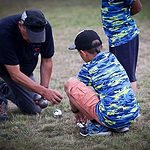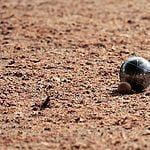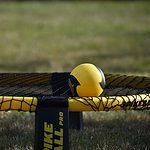When playing pickleball, imagine a scenario where you notice your opponent consistently struggles with high volleys near the kitchen line. This realization can be your key to gaining an advantage during the game.
By mastering offensive strategies like targeting weak spots and adapting your game plan accordingly, you can dictate the pace of the match and keep your opponent on their toes.
Understanding these principles is crucial for elevating your game and achieving success on the court.
Key Takeaways
- Embrace proactive approach to set the match tone.
- Analyze opponents' weaknesses for tactical advantage.
- Disrupt opponents' rhythm with aggressive tactics.
- Maintain mental toughness for control and dominance.
Importance of Offensive Mindset

Embrace the proactive approach of an offensive mindset in pickleball to seize control of the game and outmaneuver your opponents. Mental toughness is key in maintaining this aggressive mindset, allowing you to stay focused even under pressure. By cultivating an aggressive mindset, you set the tone for the match, forcing your opponents to react to your strategic shot selection and offensive tactics.
Strategic shot selection is a fundamental aspect of offensive play in pickleball. It involves analyzing your opponents' positioning and weaknesses to exploit openings on the court effectively. By consistently making smart shot choices, you can keep your opponents guessing and off-balance, gaining the upper hand in rallies.
Furthermore, offensive tactics are centered around creating scoring opportunities for yourself while keeping your opponents on the defensive. This relentless approach not only increases your chances of winning points but also disrupts your opponents' rhythm, making it harder for them to execute their own game plan. Remember, a proactive and aggressive mindset leads to successful shot selections, ultimately paving the way to victory on the pickleball court.
Proper Court Positioning for Attacks
To effectively execute offensive strategies in pickleball, mastering proper court positioning for attacks is essential. Achieving net dominance by positioning yourself near the kitchen line allows you to control the point and put pressure on your opponents. Your footwork fundamentals play a crucial role in maintaining a balanced stance, enabling quick reactions to incoming shots. By keeping your paddle in front of you, you're prepared to respond swiftly to any situation.
Moving laterally to adjust your positioning based on the ball's placement is key to covering the court effectively. Anticipating your opponent's response gives you a strategic advantage, allowing you to prepare for your next shot and stay one step ahead. Utilize the non-volley zone smartly to limit your opponent's defensive options, forcing them into difficult positions.
Utilizing Power Shots Effectively

When aiming to elevate your pickleball game, strategic implementation of power shots can be a game-changer, creating openings for decisive plays. Power shots should be used judiciously to catch your opponents off guard. Wait for the opportune moment when your opponents are out of position, then unleash a well-timed power shot to create opportunities for winners. Remember, timing and precision are key when executing power shots.
| Power Shot Strategy | Description |
|---|---|
| Selectivity | Surprise opponents by using power shots sparingly. |
| Opponent Positioning | Utilize power shots when opponents are out of position. |
| Winning Opportunities | Power shots can lead to openings for decisive plays. |
| Timing | Proper timing is crucial for effective power shots. |
| Control Balance | Balance power with control for consistent performance. |
Mastering the Dink Shot Technique
Having honed your power shot tactics, transitioning to mastering the dink shot technique in pickleball is a strategic shift towards finesse and precision. To excel in this aspect of the game, focus on the following key points:
- Precision Placement: The dink shot requires finesse control to place the ball just over the net and ideally in the opponent's non-volley zone. This precision placement can limit your opponent's options and create opportunities for you to take control of the point.
- Soft Touch: Develop a soft touch to execute the dink shot effectively. By using a continental grip and keeping the ball low, you can make it challenging for your opponents to counterattack, forcing them into defensive positions.
- Strategic Placement: Strategically placing your dink shots can disrupt your opponents' rhythm and force them to move around the court, opening up spaces for you to exploit.
- Practice Touch and Finesse: Regular practice is essential to mastering the dink shot. Focus on touch and finesse to refine your technique and consistently execute precise shots that keep your opponents off balance.
Creating and Exploiting Openings

Initiate your offensive gameplay in pickleball by strategically creating and exploiting openings on the court. To excel in this aspect, you must master the footwork fundamentals to swiftly move into position and execute your shots effectively. Engage in mind games with your opponents by disguising your intentions and keeping them guessing about your next move.
| Footwork Fundamentals | Shot Selection | Reading Opponents |
|---|---|---|
| Move quickly and efficiently to cover the court. | Opt for shots that force opponents out of position. | Analyze your opponent's body language and court positioning. |
| Position yourself for an optimal shot angle. | Utilize drop shots and lobs to exploit gaps in their defense. | Identify weaknesses in their game and target those areas. |
| Stay light on your feet to react promptly to changes in play. | Mix up your shots to keep opponents off balance. | Anticipate their shots by observing patterns in their gameplay. |
Applying Pressure With Volleys
To maintain offensive pressure and keep your opponents on their toes, focus on applying strategic volleys that force quick reactions and dictate the pace of the game. When engaging in volleys, your goal should be to control the tempo and direction of play, putting your opponents in a defensive position.
Key Points:
- Quick Reactions, Opponent Control: By executing rapid and well-placed volleys, you can force your opponents to react swiftly, limiting their options and keeping them off balance.
- Precision Placement, Offensive Dominance: Aim for precise placement with your volleys to maintain offensive dominance on the court. Target sharp angles and deep shots to make it challenging for your opponents to counter effectively.
- Dictate Play: Use your volleys to dictate the flow of the game, setting the pace and controlling the rhythm of exchanges.
- Consistency and Practice: Practice consistently to ensure that your volleys are reliable and effective, allowing you to sustain offensive pressure throughout the match.
Transitioning From Defense to Offense

When transitioning from defense to offense in pickleball, seize opportunities by swiftly identifying openings in your opponent's positioning to launch a strategic and aggressive attack. Timing transitions is crucial in this phase of the game. You must be ready to pounce on any weaknesses or lapses in your opponent's play. Recognizing opportunities to shift from a defensive stance to an offensive one requires keen observation and quick decision-making.
As you anticipate the right moment to make the transition, keep a close eye on your opponent's movements and vulnerabilities. Use your quick footwork and strategic positioning to smoothly switch gears and take control of the point. Be prepared to adjust your strategy on the fly and capitalize on any openings that arise.





